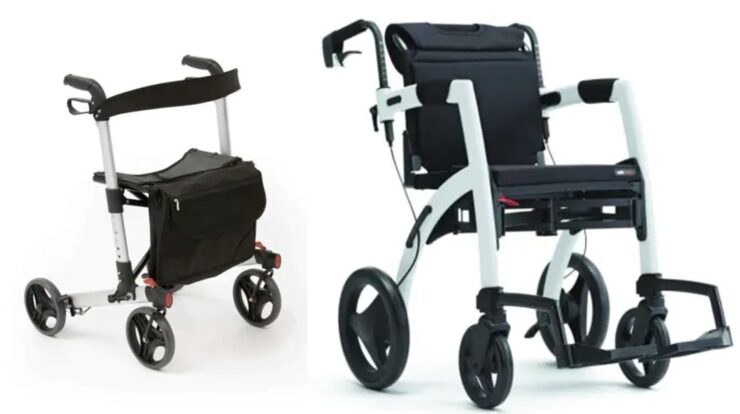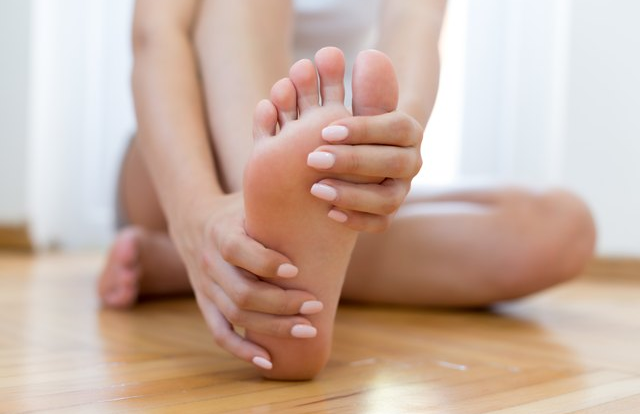
Blisters on your feet can be incredibly uncomfortable and make it hard to walk, exercise, or even wear shoes. Whether you got them from a new pair of shoes, a long hike, or just being on your feet all day, blisters need proper care to heal quickly and avoid infection. Here are some simple, effective ways to soothe blisters on your feet and get back to comfort.
1. Leave the Blister Intact
If your blister is still intact (not popped), it’s best to leave it that way. The skin over the blister protects it from infection and promotes healing.
- What to Do: Avoid putting too much pressure on the blister and protect it with a clean bandage or blister pad. Cushioning the area helps reduce friction and minimizes pain.
2. Clean and Disinfect if It’s Popped
If the blister has already popped, it’s essential to keep the area clean to prevent infection.
- How to Care for It: Gently wash the area with soap and water. Pat it dry with a clean towel and apply an antiseptic ointment. Cover it with a sterile bandage to keep it protected.
3. Apply a Cold Compress
A cold compress can help reduce inflammation and numb the pain from a blister, providing quick relief.
- How to Use: Wrap an ice pack or a clean cloth soaked in cold water over the blister for a few minutes. Avoid applying ice directly to the blister, as this can irritate the skin.
4. Use a Blister Bandage or Moleskin
Blister bandages are designed to cushion the blister, protect it from further rubbing, and promote faster healing. Moleskin is another great option that reduces friction.
- How to Apply: Place the blister bandage or a piece of moleskin over the blister, making sure it covers the area entirely. This protects the blister from further irritation and helps it heal.
5. Soak in Epsom Salt
Soaking your feet in Epsom salt can soothe the surrounding area and help the blister heal faster. Epsom salt has anti-inflammatory properties, making it a great choice for foot care.
- How to Prepare: Add about half a cup of Epsom salt to a basin of warm water and soak your feet for 15-20 minutes. After soaking, gently pat your feet dry and apply a protective bandage over the blister.
6. Apply Aloe Vera for Soothing Relief
Aloe vera has natural anti-inflammatory and moisturizing properties, making it ideal for soothing blisters.
- How to Use: Apply a small amount of pure aloe vera gel to the blister and let it dry. This reduces pain and keeps the area moisturized, promoting faster healing.
7. Tea Tree Oil for Infection Prevention
Tea tree oil has antiseptic properties that can help prevent infections, especially if your blister has popped. However, it’s strong, so it’s essential to dilute it before applying.
- How to Use: Mix a few drops of tea tree oil with a teaspoon of coconut oil or another carrier oil. Dab it gently onto the blister with a clean cotton swab, then cover the area with a bandage.
8. Honey for Natural Healing
Honey is a natural antiseptic and has been used for centuries to heal wounds and soothe skin. Applying honey can help reduce swelling and prevent infection.
- How to Use: Apply a small amount of honey to the blister and cover it with a sterile bandage. Leave it on for a few hours or overnight before gently rinsing with warm water.
9. Protect with Cornstarch
If you need to keep the blister dry to prevent irritation, cornstarch can help. It absorbs excess moisture and reduces friction, making it easier to walk comfortably.
- How to Use: Sprinkle a small amount of cornstarch around the blister (but avoid direct contact with an open blister). This keeps the surrounding area dry, reducing irritation.
10. Avoid Wearing Tight or Rubbing Shoes
Proper footwear can make a huge difference in how quickly your blister heals. If your shoes are causing the problem, switch to something that fits well and doesn’t rub against the blister.
- Footwear Tips: Choose cushioned, breathable shoes, and avoid wearing high heels or shoes that are too tight. Socks with extra padding can also protect your feet and reduce friction.
When to See a Doctor
Most blisters heal on their own with proper care, but there are times when you may need medical help:
- If the blister becomes red, swollen, or hot to the touch
- If you notice pus or a foul smell, which may indicate infection
- If you have diabetes or circulation problems, as these can complicate healing
If you notice any of these symptoms, contact a healthcare provider for guidance.
How to Prevent Blisters on Your Feet
Preventing blisters is always better than dealing with them. Here are a few tips to keep your feet blister-free:
- Wear the Right Shoes: Make sure your shoes fit well and don’t rub against sensitive areas.
- Moisturize: Dry skin is more prone to blistering, so apply a good moisturizer to your feet regularly.
- Use Blister Prevention Tapes or Bandages: If you know certain shoes or activities cause blisters, place a blister bandage on high-friction areas before you start.
- Wear Moisture-Wicking Socks: These socks reduce friction and keep your feet dry, lowering the chances of blisters forming.
With these simple remedies and prevention tips, you can soothe blisters quickly and prevent them from forming in the future. Taking good care of your feet will keep them comfortable and blister-free, allowing you to stay active and pain-free.






